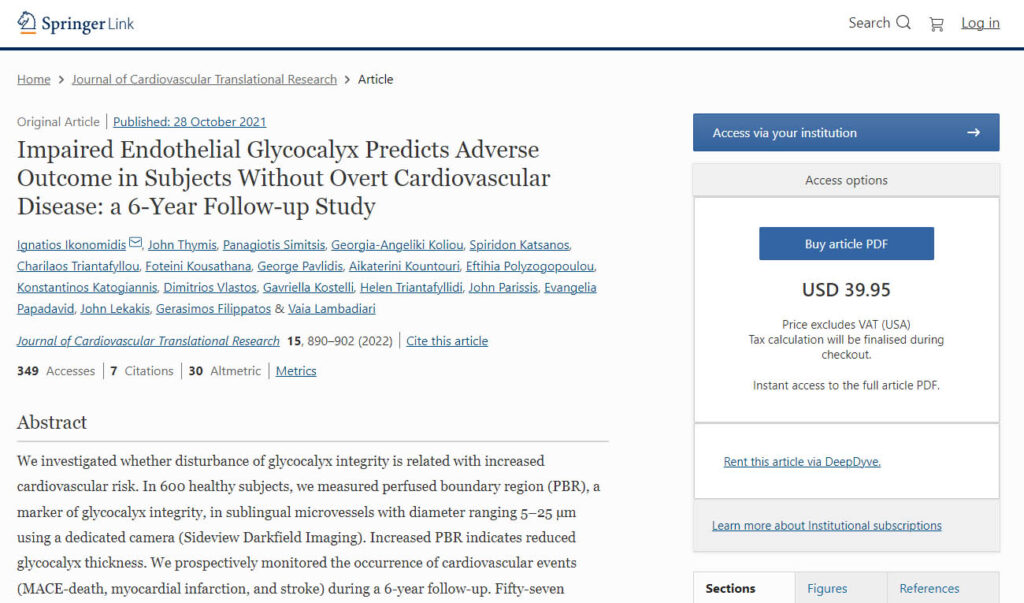Abstract
We investigated whether disturbance of glycocalyx integrity is related with increased cardiovascular risk. In 600 healthy subjects, we measured perfused boundary region (PBR), a marker of glycocalyx integrity, in sublingual microvessels with diameter ranging 5–25 µm using a dedicated camera (Sideview Darkfield Imaging). Increased PBR indicates reduced glycocalyx thickness. We prospectively monitored the occurrence of cardiovascular events (MACE-death, myocardial infarction, and stroke) during a 6-year follow-up. Fifty-seven MACE were documented. Increased values of PBR5-25 predicted higher risk for MACE in a model including sex, age, hyperlipidemia, diabetes, hypertension, smoking, family history of coronary disease, treatment with ACEi/ARBs, or lipid-lowering agents (hazard ratio (HR), 6.44, p = 0.011; net reclassification improvement (NRI), 28%; C-statistic: 0.761). PBR5-25 was an independent and additive predictor of outcome when added in a model including the European Heart SCORE, diabetes, family history of CAD, and medication (HR, 4.71; NRI: 39.7%, C-statistic from 0.653 to 0.693; p < 0.01).Glycocalyx integrity is an independent and additive predictor to risk factors for MACE at 6-year follow-up in individuals without cardiovascular disease. ClinicalTrials.govIdentifier:NCT04646252.


